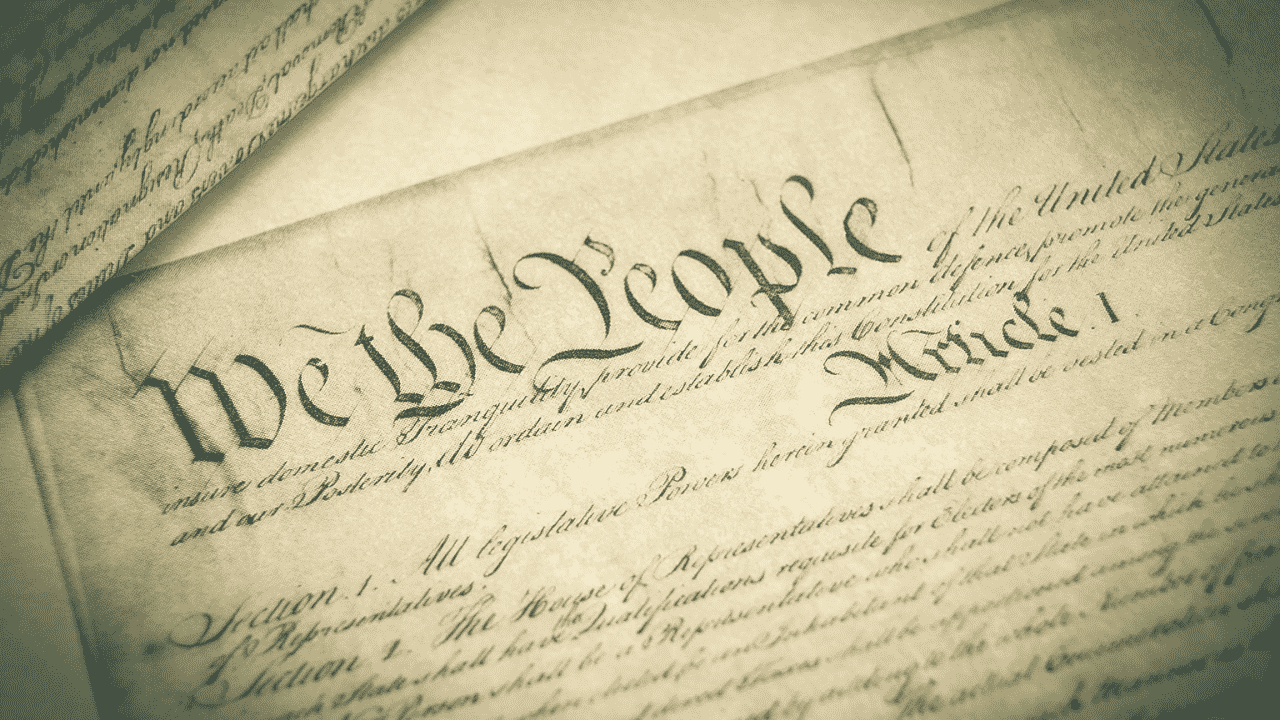“Something must be done, or we shall disappoint not only America, but the whole world…. We must make concessions on both sides. Without these, the constitutions of the several states would never have been formed.”
–Elbridge Gerry of Massachusetts, July 2, 1787
W. Clement Stone is credited with having coined the phrase “Little hinges swing big doors.” There is no clearer example of this in American history than the record of events from July 2, 1787. Delegates from 12 of the 13 states were assembled in Philadelphia to amend the Articles of Convention, and from the very beginning in mid-May there was far more discord than harmony.
July 2 was no different. There were, however, a couple of small hinges missing in Philadelphia that hot summer day and the door of history couldn’t swing.
Just a few days earlier, Oliver Ellsworth of Connecticut had made a motion for equality of representation in the Senate created by the Constitution being constructed. On Monday, July 2, the need to vote on Ellsworth’s proposal pressed on the delegates, and the entire congregation appreciated the gravity of the moment.
Fortunately — not just for America but for the world, according to Elbridge Gerry — a couple of very crucial partisans were absent from the convention that day and history took a turn that wouldn’t have happened otherwise.
To the relief of some and the rancor of others, the vote was deadlocked on equality of state representation in the Senate. Connecticut, New York, New Jersey, Delaware, and Maryland voted in favor of Ellsworth’s motion; Massachusetts, Pennsylvania, Virginia, North Carolina, and South Carolina voted against it. The delegation from Georgia was divided, thus its vote was nullified.
With the absence of William Pierce of Georgia (he had returned to New York to carry on his congressional duties) and Daniel of St. Thomas Jenifer’s late arrival, the trajectory of history was altered significantly.
Everyone who had bothered showing up to the Pennsylvania State House that morning knew that both men — Jenifer and Pierce — were dead set against equality of representation and certainly would have voted down the Ellsworth motion.
Had Pierce been present, the vote of Georgia would not have been divided and that state’s vote would have been recorded in the “No” column. Likewise, had Jenifer not hit the 18th-century equivalent of snooze on his alarm clock, he would have voted with the large states (his colleague Luther Martin voted with the small states) and the final tally would have been favorable for the large states and against equal representation in the Senate.
The crisis, then, continued, with compromise on this core issue seemingly chimerical.
The Pinckneys of South Carolina (Charles C. and Charles) sensed the swing toward the futile future of the convention and accordingly pushed for some sort of agreement between the two factions. Charles C. Pinckney proposed that a committee be formed of delegates from each state tasked with drafting some sort of compromise that would appease both sides.
Many notable delegates rose in favor of Pinckney’s proposal, including Edmund Randolph of Virginia who lamented that he feared that “considering the warmth exhibited in debate on Saturday, I have, I confess, no great hopes that any good will arise from it.”
Hugh Williamson of North Carolina read the writing on the wall and predicted that “if we do not concede on both sides, our business will soon be at an end.”
In spite of the spirit of compromise displayed by many, two of the brightest lights in the convention constellation would not be moved.
James Madison and James Wilson not only opposed equality of representation in the Senate, but right up until the final and binding vote on the creation of the compromise committee, voted in the negative.
In the end, however, the states voted 11-1 (Wilson’s Pennsylvania delegation voted against the Pinckney proposal) to appoint by vote a committee to draft language of compromise that would carry the convention over the rough waters of representation.
After the committee members were chosen, the body of the convention voted to give the committee time to deliberate and discuss their options, adjourning until Thursday, July 5.
Finally, on July 16, 1787 after nearly two weeks of debate, the convention adopted what has come to be known as the “Great Compromise.” Essentially, the compromise established that representation in the House of Representatives would be decided according to population, while in the other chamber of the legislature — the Senate — each state would be represented equally.
Historically, the Great Compromise has been called the “Connecticut Compromise,” in honor of Roger Sherman, delegate from that state, who is credited with coming up with the idea. While Sherman did serve on that committee, at the time there were those who identified a motion made by Benjamin Franklin in the committee’s meetings that led to the proposal that saved the Constitution. Either way, there is an essential element of Sherman’s support for the plan that has gone generally unnoticed by historians and history teachers.
Unlike many of the more notable names that are associated with the Constitutional Convention, Roger Sherman actually showed up almost every day debates were held (compare that to Alexander Hamilton’s near non-participation, and it’s a wonder why Sherman didn’t inspire a hit Broadway show!).
When it came to the question of how representation in the legislature should be determined, Sherman advocated the solution he supported in the Continental Congress during the drafting of the Articles of Confederation — bicameral composition with one house apportioned according to population.
As the story is told today, the Great Compromise is described as a victory for “small states,” when in reality, Sherman considered it a victory for the perpetuation of state sovereignty.
So today, and everyday, take a moment to remember Roger Sherman and how his “Great Compromise” was aimed at protecting the power of states to govern themselves free from federal overreach.
This article was originally published at The New American and is reposted here with permission from the author.



